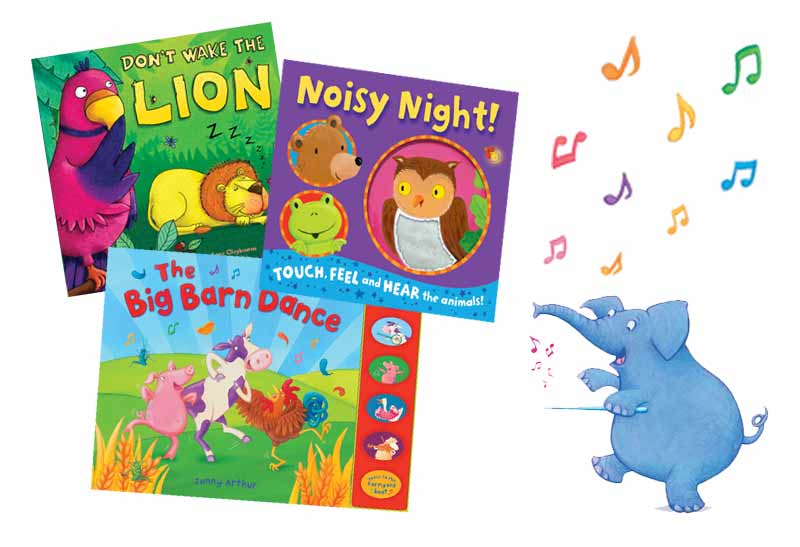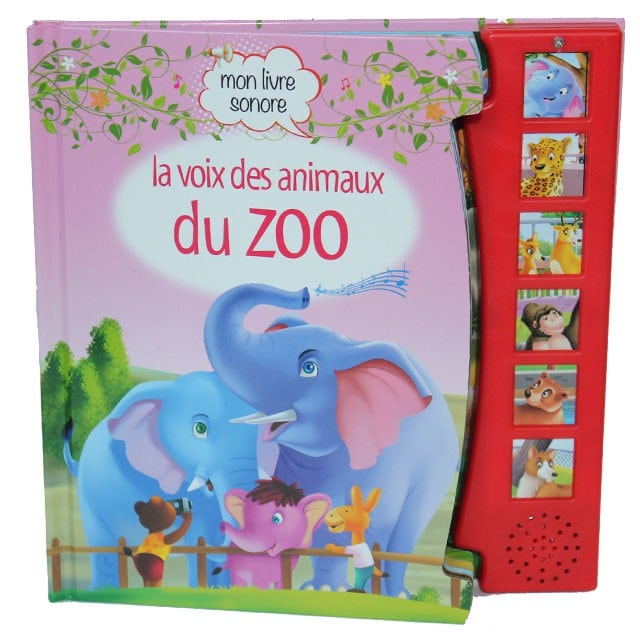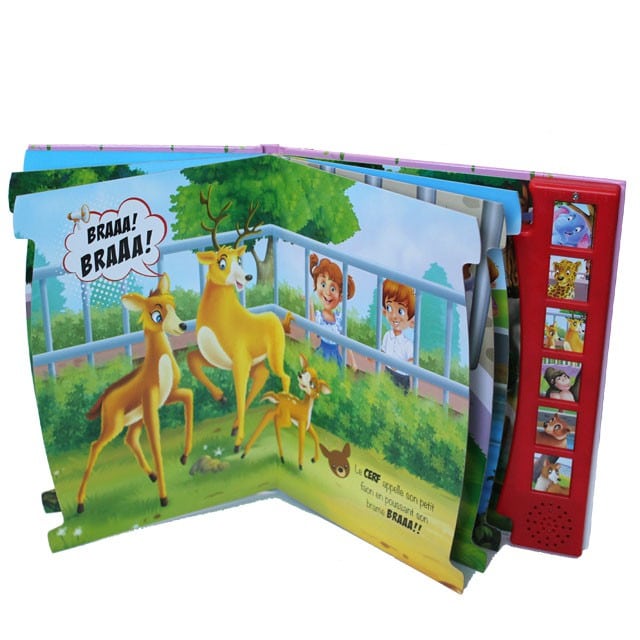Discover The Magic Of Children's Sound Books For Early Learning
Children's sound books have become an essential tool for early childhood education and development. These interactive books engage young learners through sight, sound, and touch, making reading a fun and educational experience. By combining vibrant illustrations with auditory elements, sound books cater to different learning styles, helping children grasp concepts more effectively.
In today's fast-paced world, finding ways to captivate young minds is crucial. Parents and educators are turning to innovative learning tools like sound books to make reading enjoyable. These books go beyond traditional storytelling by incorporating sounds that bring stories to life, enhancing comprehension and retention.
This comprehensive guide explores the benefits, types, and best practices of using children's sound books. We'll delve into how these interactive books support cognitive development, language acquisition, and sensory learning. Whether you're a parent looking for educational resources or an educator seeking innovative teaching tools, this article provides valuable insights and expert recommendations.
Read also:La Palma Volcano 2024 The Latest Developments And Impacts
Table of Contents
- Benefits of Children's Sound Books
- Types of Children's Sound Books
- Role in Child Development
- How to Select the Right Sound Book
- Effective Usage Tips
- Technology Integration
- Most Popular Sound Books
- Comparison with Traditional Books
- Future of Sound Books
- Conclusion
Benefits of Children's Sound Books
Children's sound books offer numerous advantages that traditional books cannot match. The auditory element enhances learning by engaging multiple senses, which is particularly beneficial for young learners. According to a study published in the Journal of Early Childhood Education, sound books improve vocabulary retention by up to 30% compared to traditional reading materials.
Enhanced Learning Experience
Sound books provide an interactive experience that captures children's attention more effectively than static pages. The combination of visuals and sounds creates a multisensory environment that supports different learning styles.
Improved Language Skills
These books help children develop essential language skills by exposing them to correct pronunciation and intonation. Regular interaction with sound books can significantly enhance listening skills and comprehension abilities.
Types of Children's Sound Books
The market offers a variety of children's sound books designed to cater to different age groups and learning objectives. Understanding the types available can help parents and educators choose the most suitable options.
Board Books with Sound Buttons
- Perfect for toddlers and preschoolers
- Feature durable pages and interactive sound buttons
- Ideal for introducing basic concepts like numbers and colors
Interactive Digital Books
- Combine traditional storytelling with digital sound effects
- Accessible through tablets or e-readers
- Offer advanced features like voice narration and quizzes
Role in Child Development
Children's sound books play a crucial role in cognitive and sensory development. They stimulate curiosity and encourage exploration, which are essential for early learning. Research from the Child Development Institute indicates that interactive books can enhance problem-solving skills and creativity in young children.
Cognitive Benefits
Sound books improve memory retention and concentration by presenting information in multiple formats. The auditory component helps reinforce concepts learned through visual means, creating a more comprehensive understanding.
Read also:Tag For Baggage Your Ultimate Guide To Travel Essentials
Sensory Learning
Engaging multiple senses during the learning process enhances neural connections in the brain. Sound books provide tactile, visual, and auditory stimulation, making them an effective tool for sensory development.
How to Select the Right Sound Book
Choosing the right children's sound book depends on the child's age, interests, and learning goals. Consider the following factors when making your selection:
- Age appropriateness: Ensure the content aligns with the child's developmental stage
- Durability: Opt for books with sturdy pages and durable sound components
- Educational value: Select books that support specific learning objectives
- Engagement level: Choose books with interactive features that capture attention
Effective Usage Tips
Maximizing the benefits of children's sound books requires proper usage strategies. Here are some tips for parents and educators:
Interactive Reading Sessions
Engage children in interactive reading by asking questions and encouraging them to press sound buttons. This approach fosters active participation and enhances comprehension.
Setting a Routine
Establish a regular reading schedule to build consistency and reinforce learning. Short, frequent sessions are more effective than occasional long sessions.
Technology Integration
Modern technology has revolutionized the way children's sound books are designed and used. Apps and digital platforms now offer enhanced features that complement traditional sound books.
Augmented Reality Features
Some sound books incorporate augmented reality elements that bring stories to life through 3D animations and interactive experiences. This technology creates an immersive learning environment that captivates young minds.
Personalized Learning
Digital sound books often include adaptive learning features that adjust content based on the child's progress. This personalized approach ensures optimal learning outcomes.
Most Popular Sound Books
Several children's sound books have gained popularity due to their innovative design and educational value. Here are some top choices:
- Press Here by Hervé Tullet: A bestseller known for its interactive sound elements
- My First Animal Sounds: Ideal for toddlers learning about animals and their sounds
- The Very Hungry Caterpillar Sound Book: A classic story enhanced with sound effects
Comparison with Traditional Books
While traditional books remain valuable educational tools, sound books offer distinct advantages. They provide a more engaging learning experience by incorporating auditory elements that traditional books lack.
Engagement Levels
Sound books maintain higher engagement levels due to their interactive nature. Children are more likely to stay focused and interested when sound effects and music accompany the story.
Learning Outcomes
Studies show that children using sound books demonstrate better comprehension and retention compared to those using traditional books alone. The multisensory approach enhances overall learning effectiveness.
Future of Sound Books
The future of children's sound books looks promising with advancements in technology and educational methodologies. Innovations in artificial intelligence and virtual reality are expected to further enhance the learning experience.
Emerging Technologies
AI-driven sound books will offer personalized learning experiences tailored to individual needs. Virtual reality components will create immersive environments that make learning more enjoyable and effective.
Global Accessibility
As technology becomes more accessible worldwide, sound books will reach a broader audience, providing educational opportunities to children in remote areas.
Conclusion
Children's sound books represent a significant advancement in early childhood education. Their ability to engage multiple senses and support diverse learning styles makes them invaluable tools for parents and educators. By selecting the right sound books and implementing effective usage strategies, you can maximize their educational benefits.
We encourage you to explore the wide range of sound books available and discover how they can enhance your child's learning journey. Share your experiences in the comments section and consider exploring other educational resources on our site. Together, let's create a brighter future for our children through innovative learning tools.


